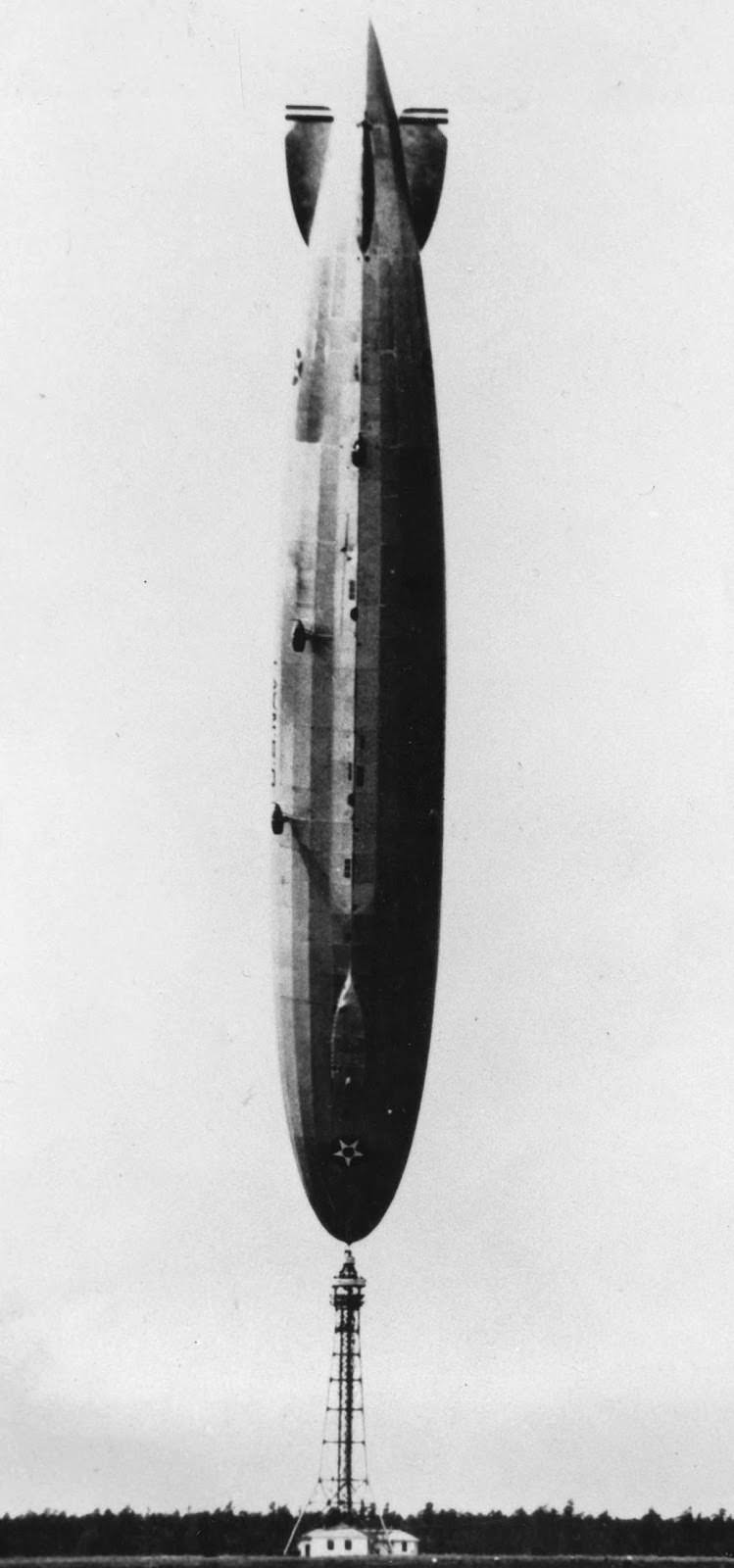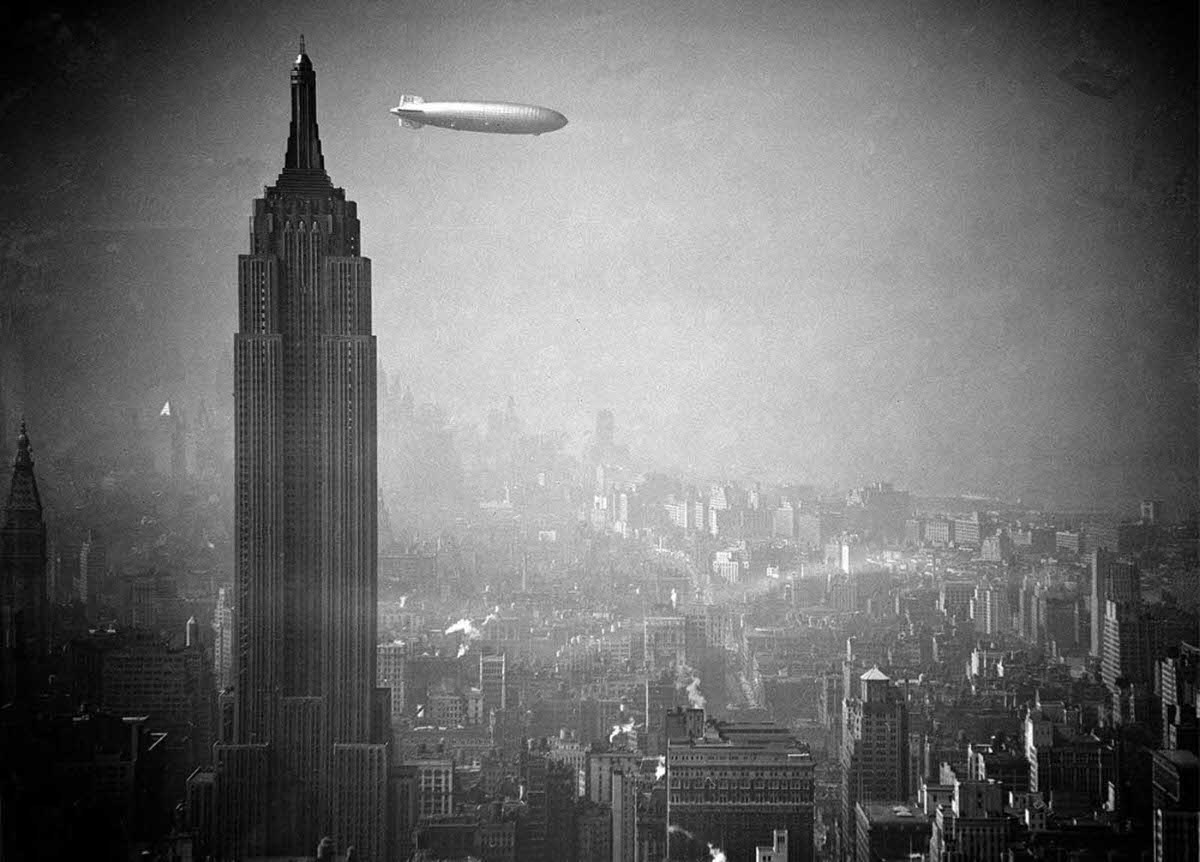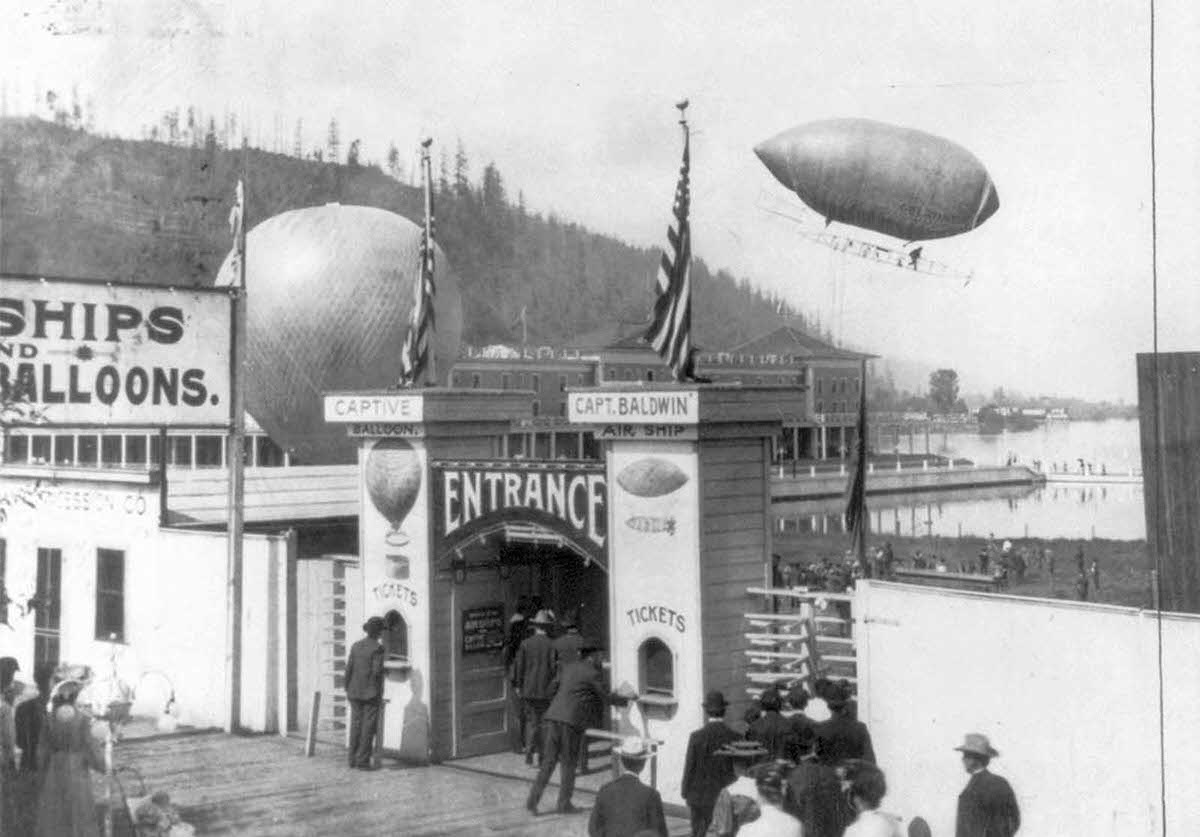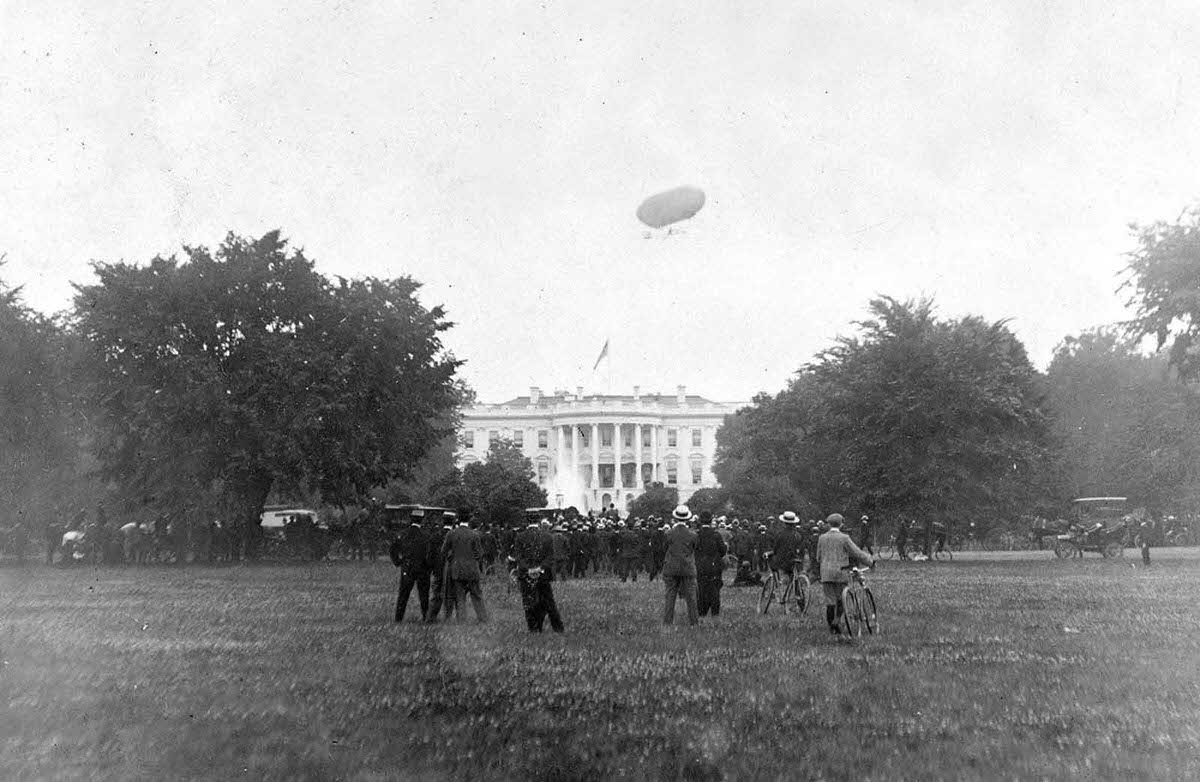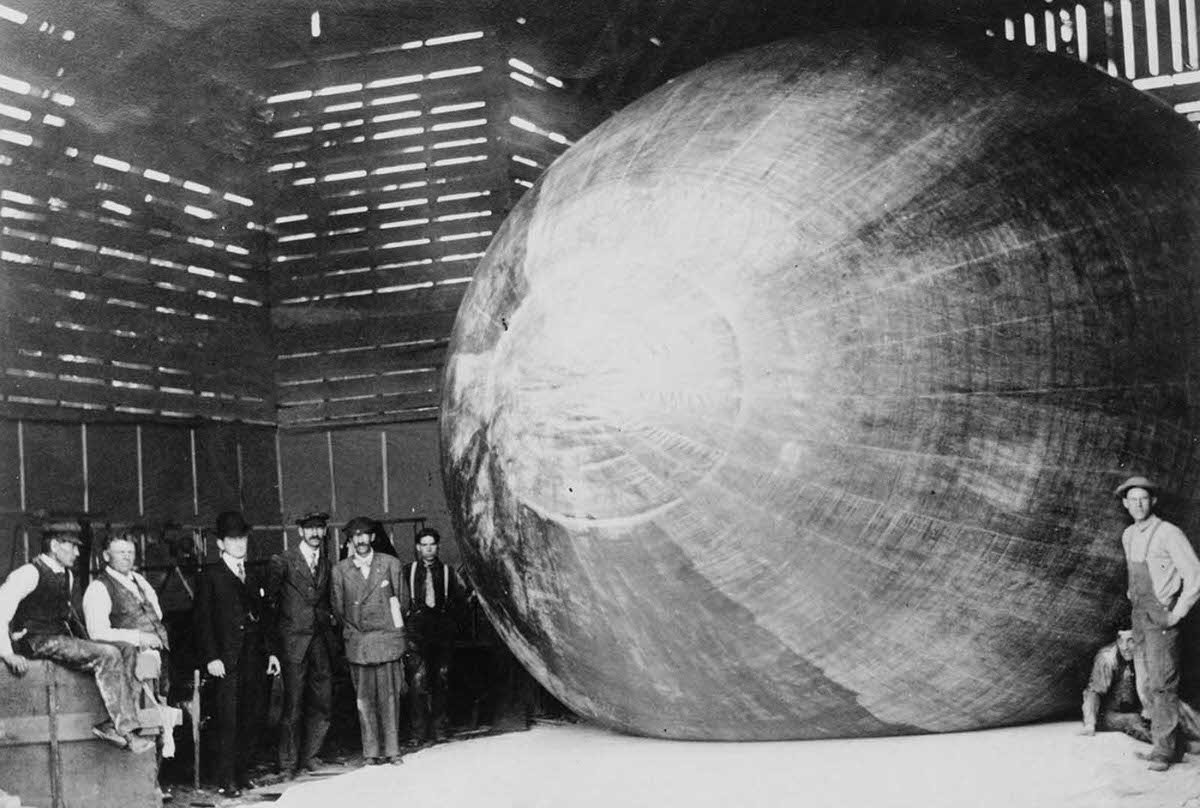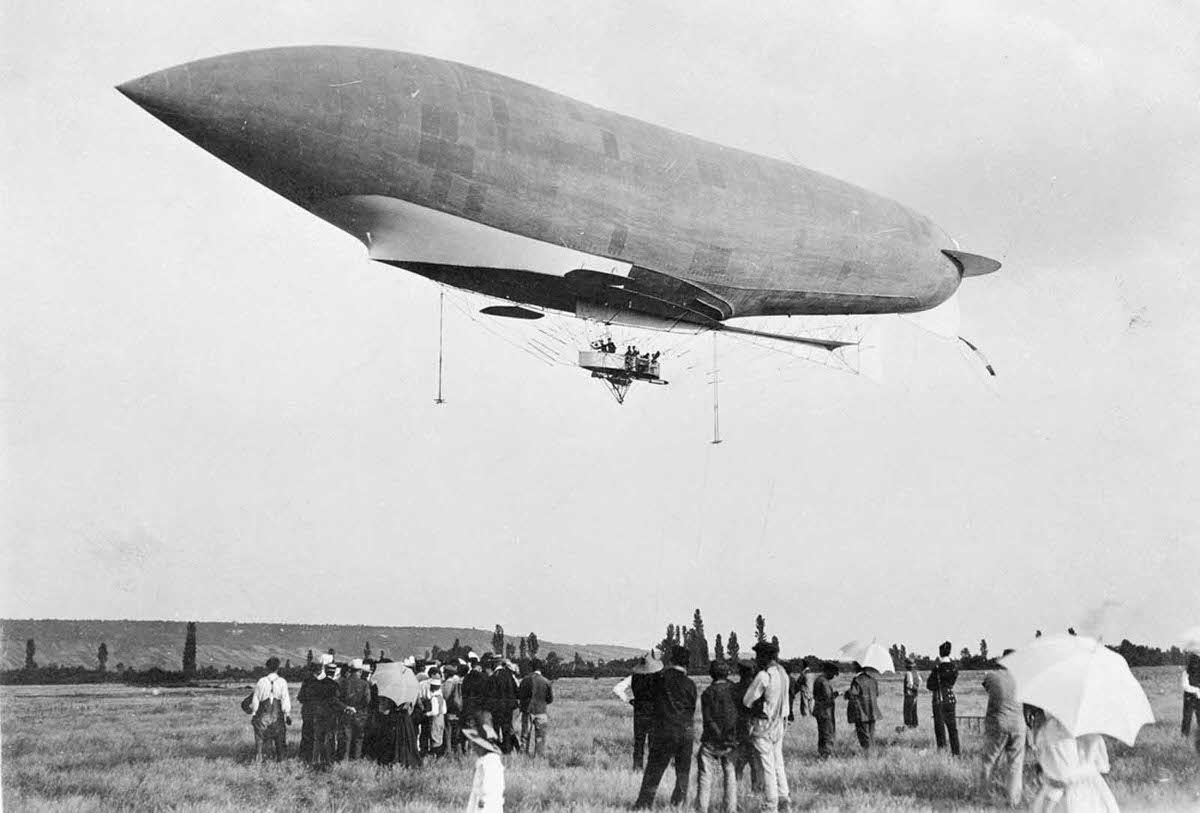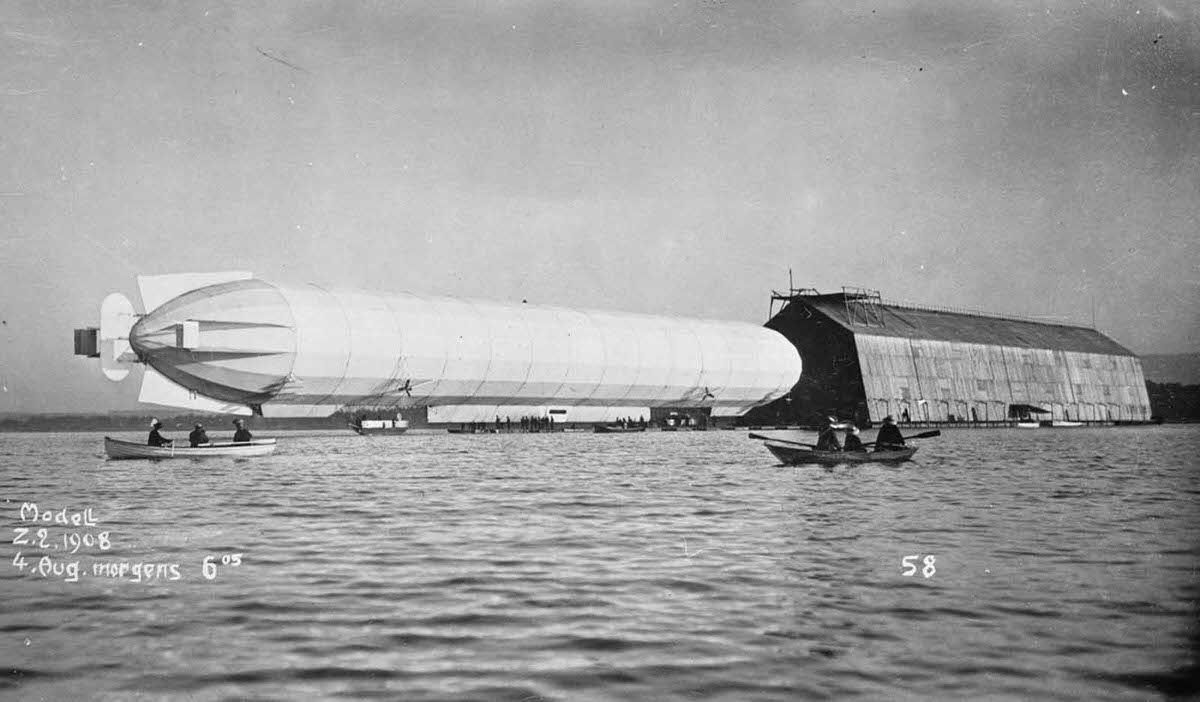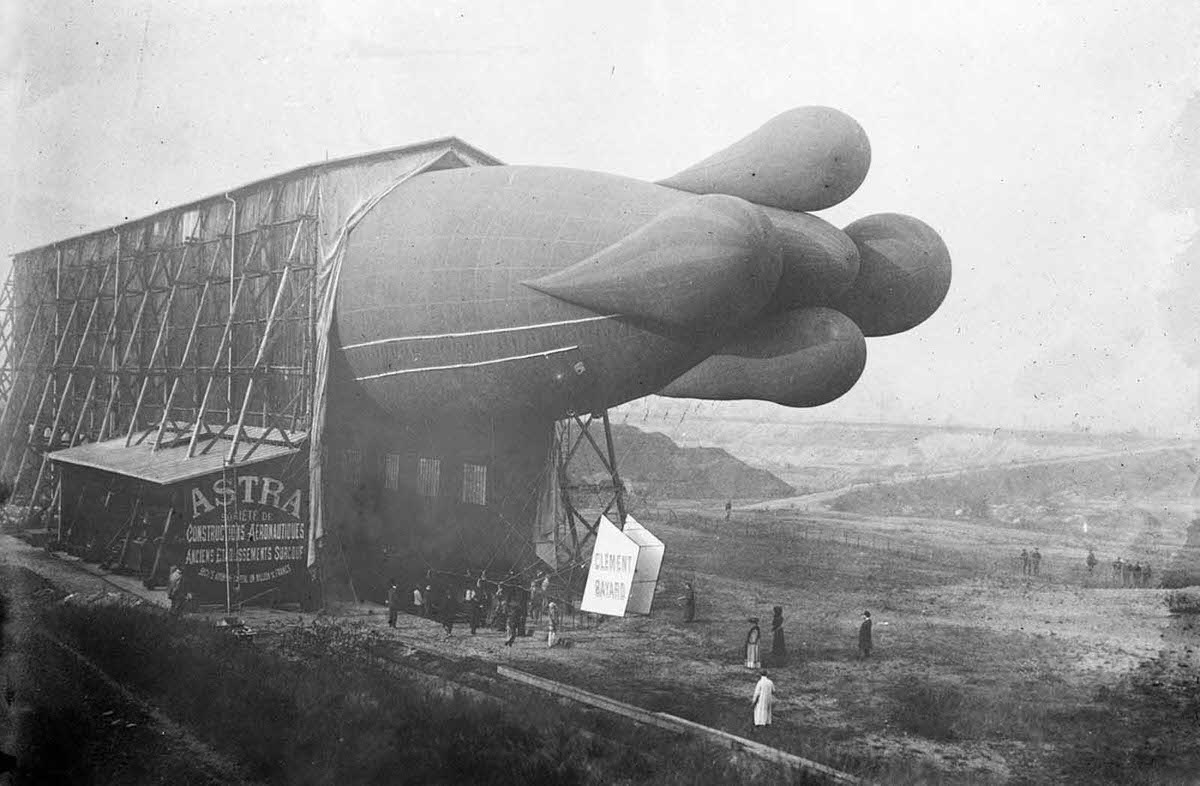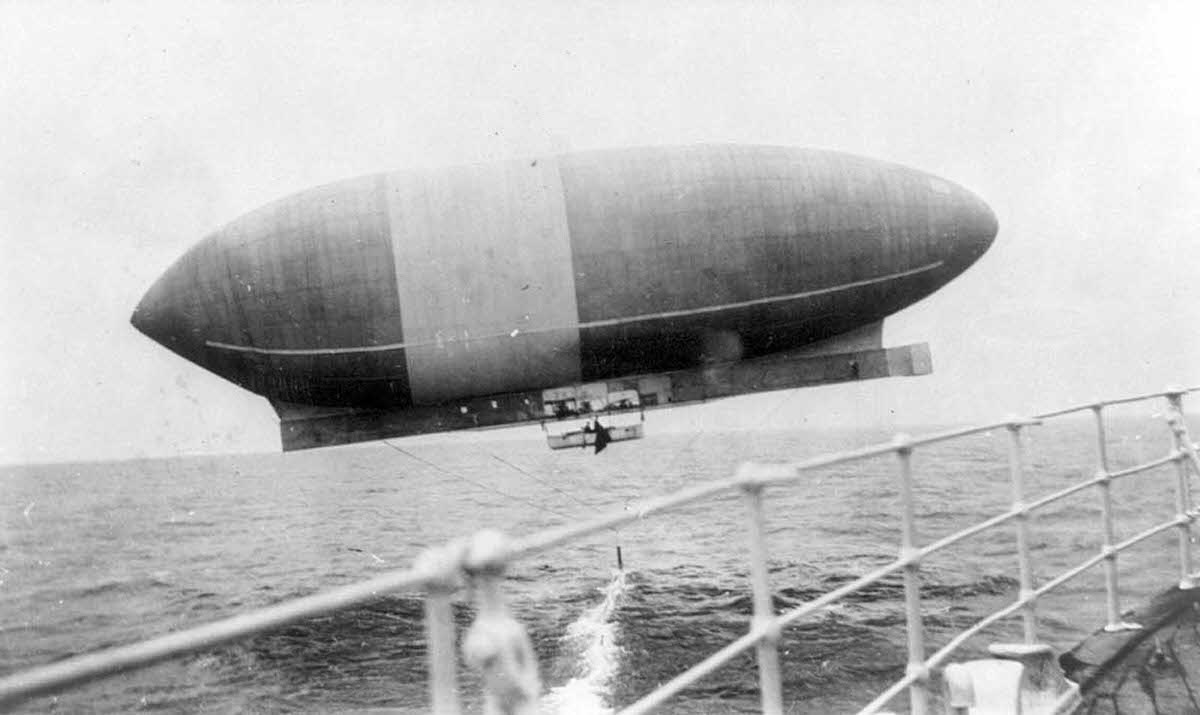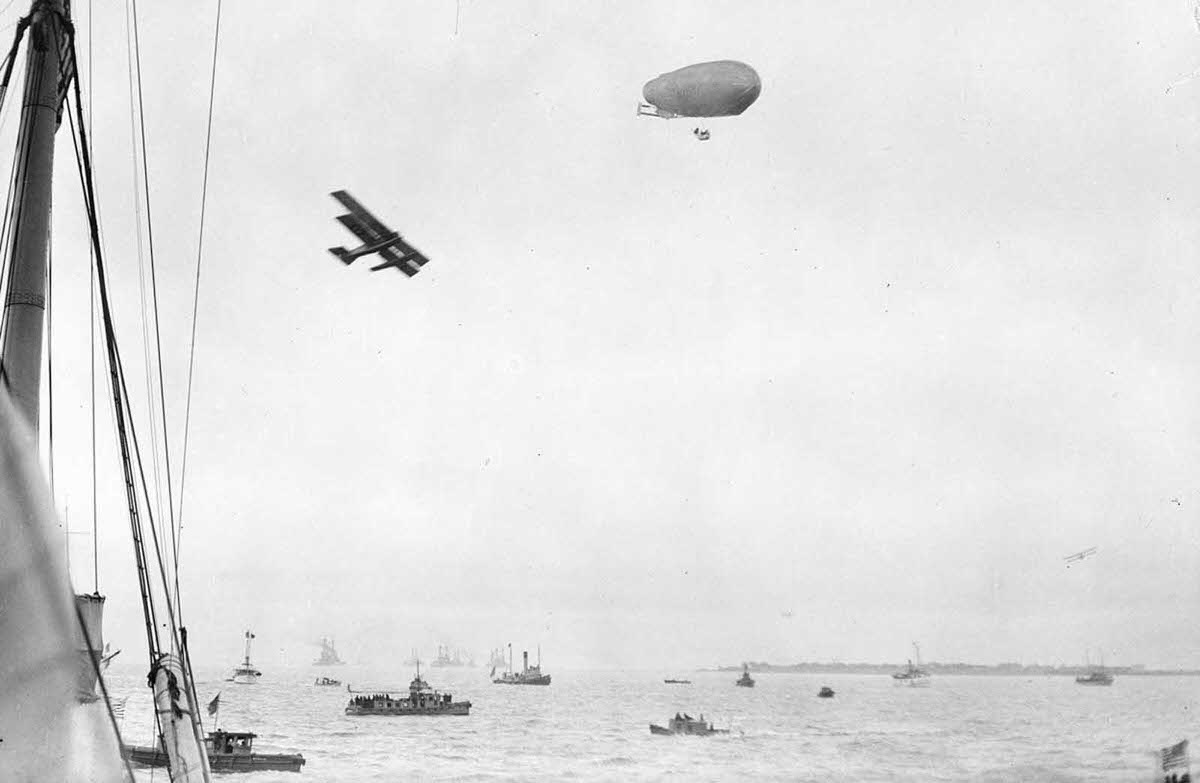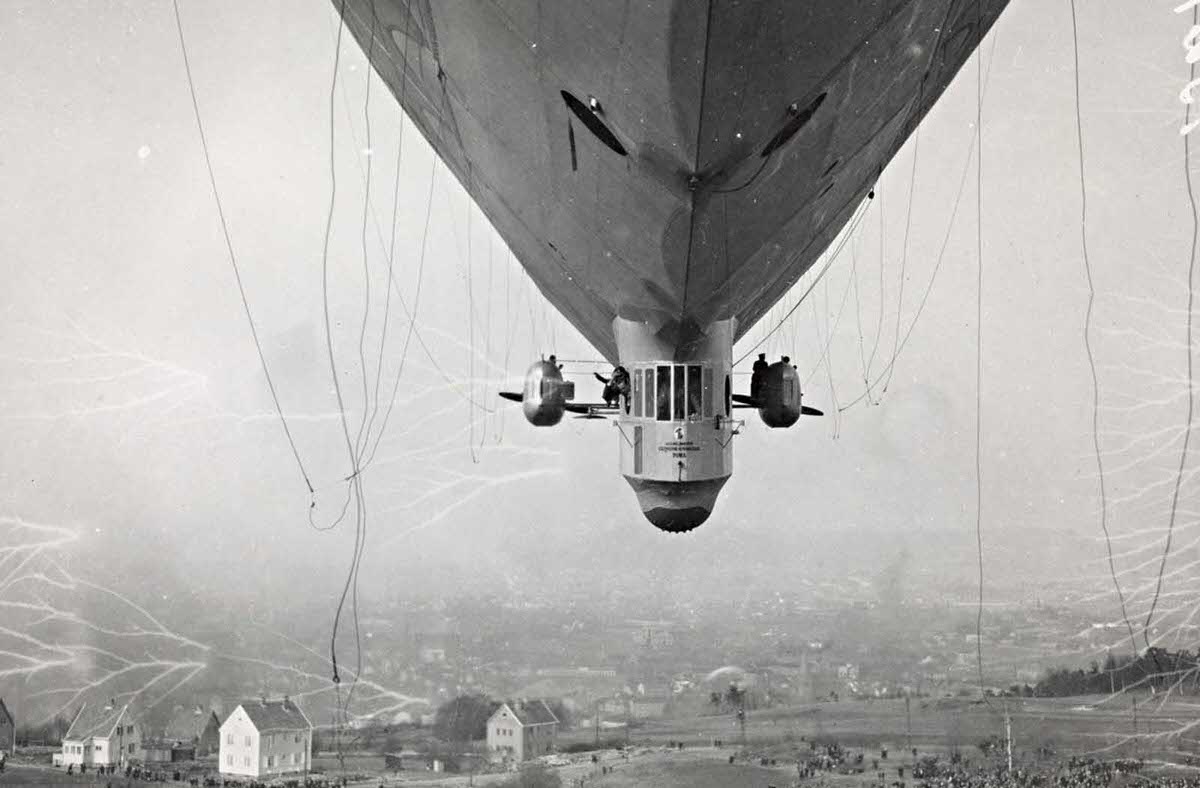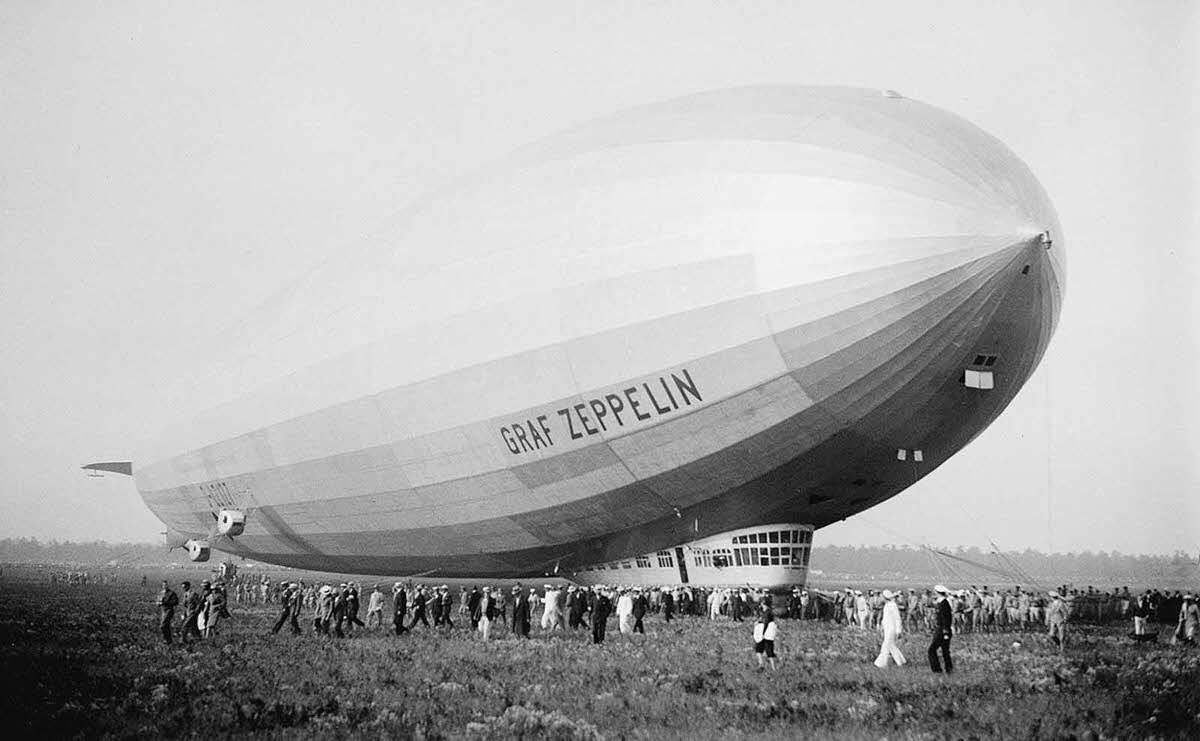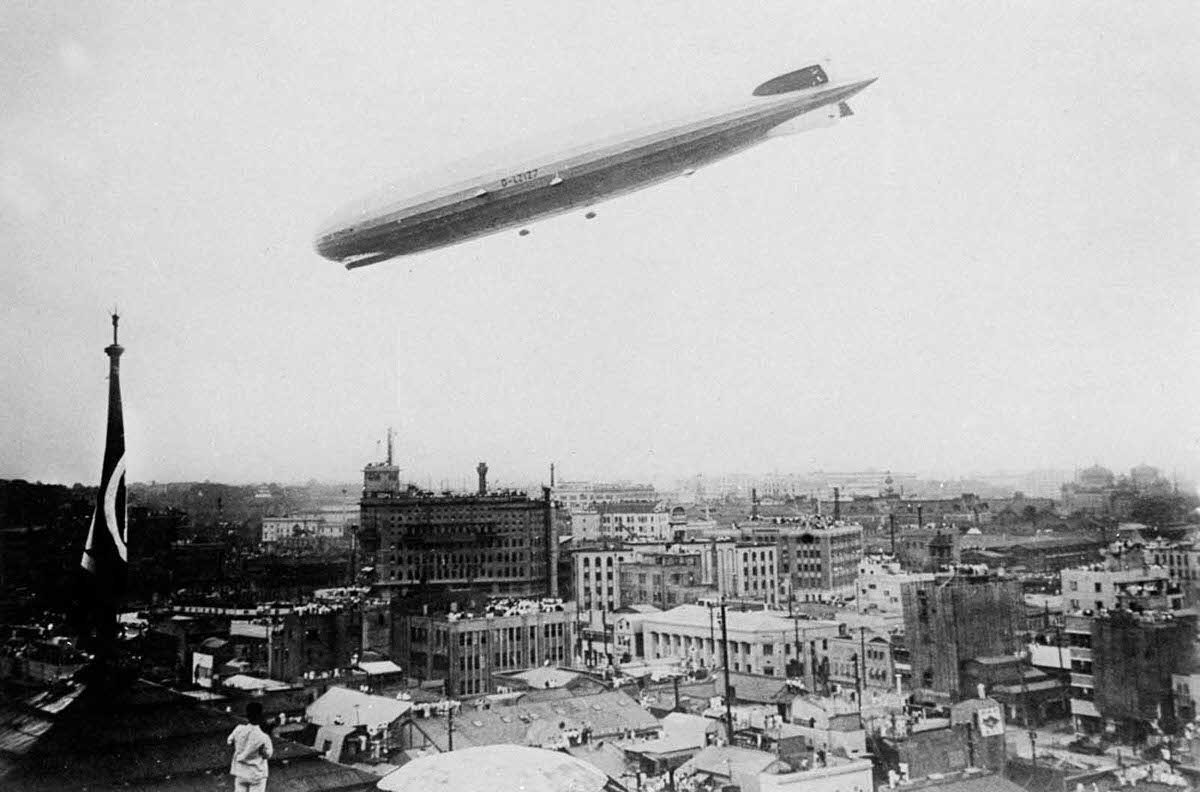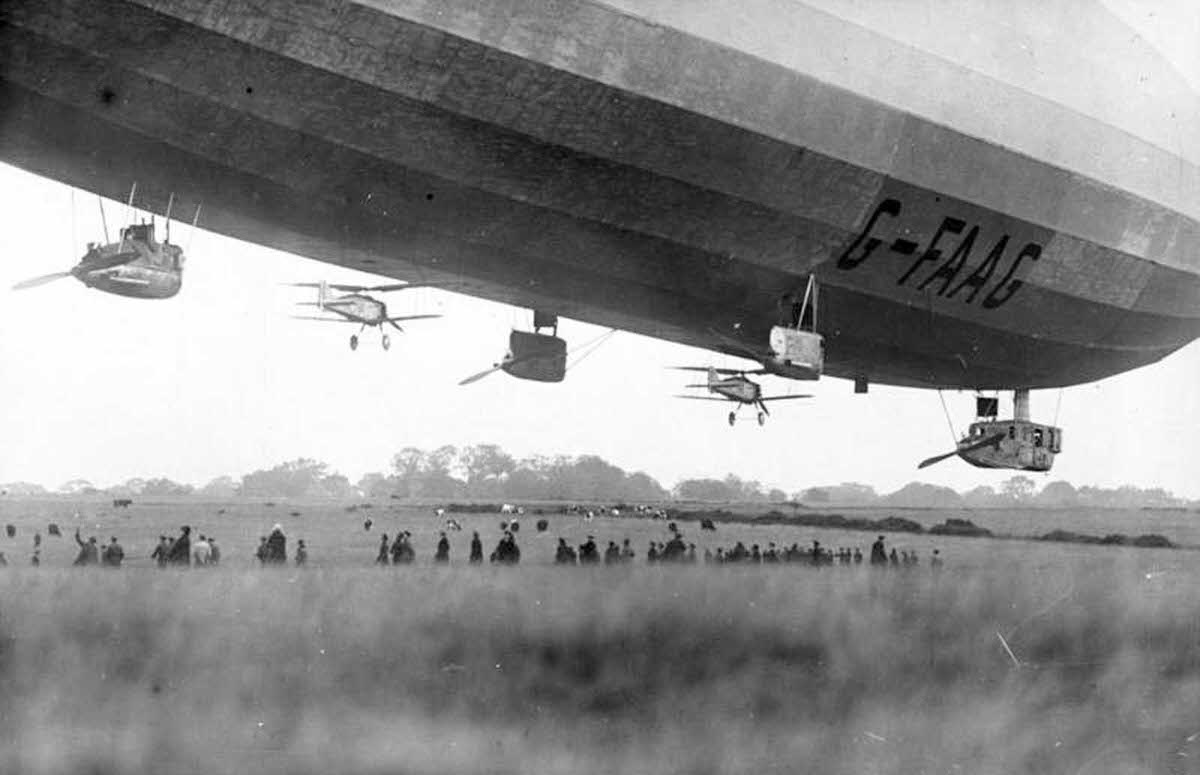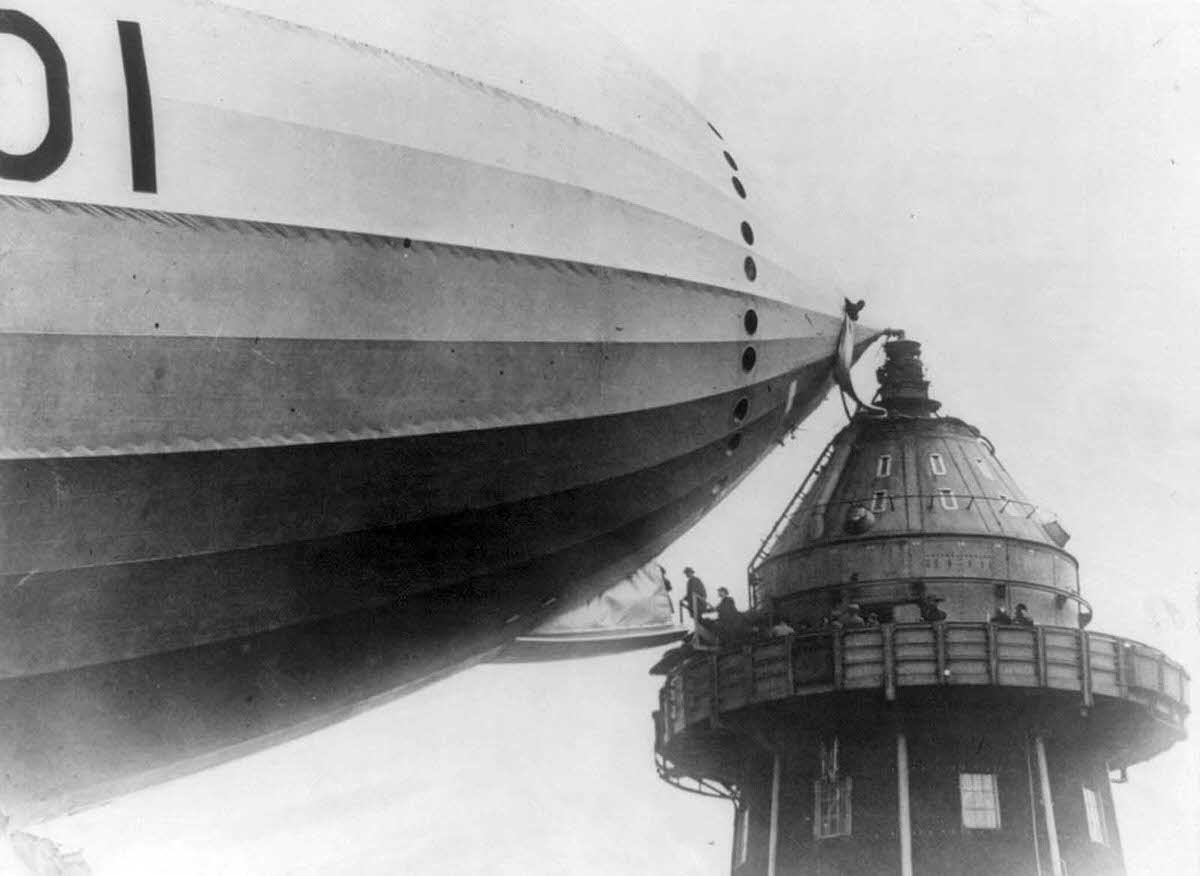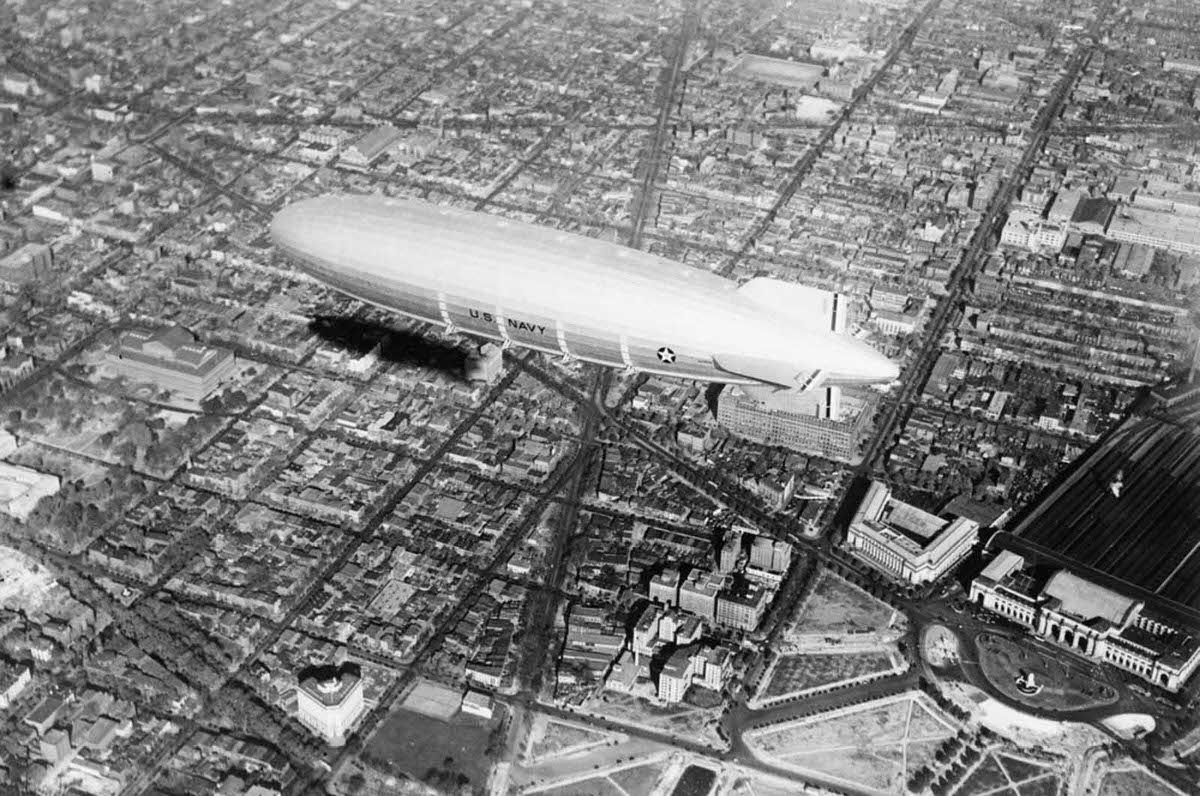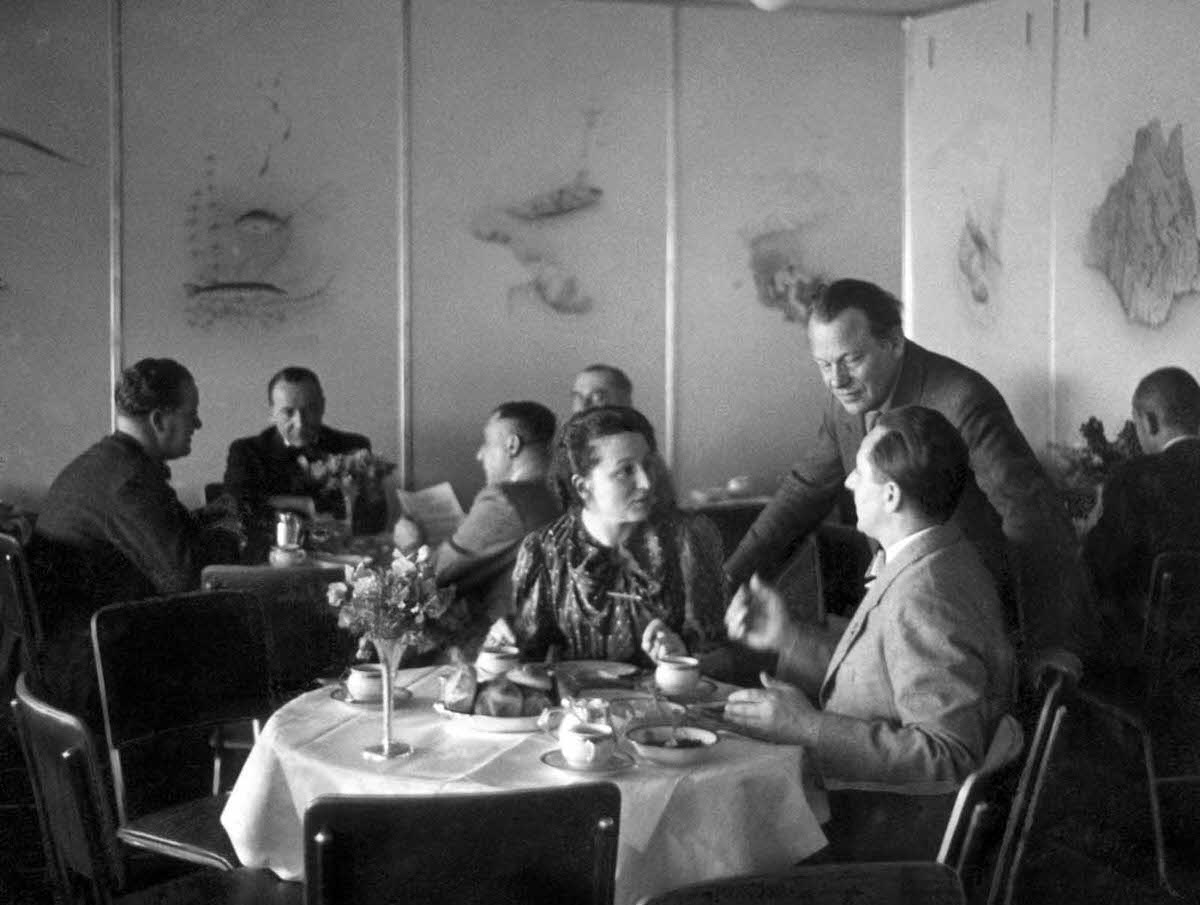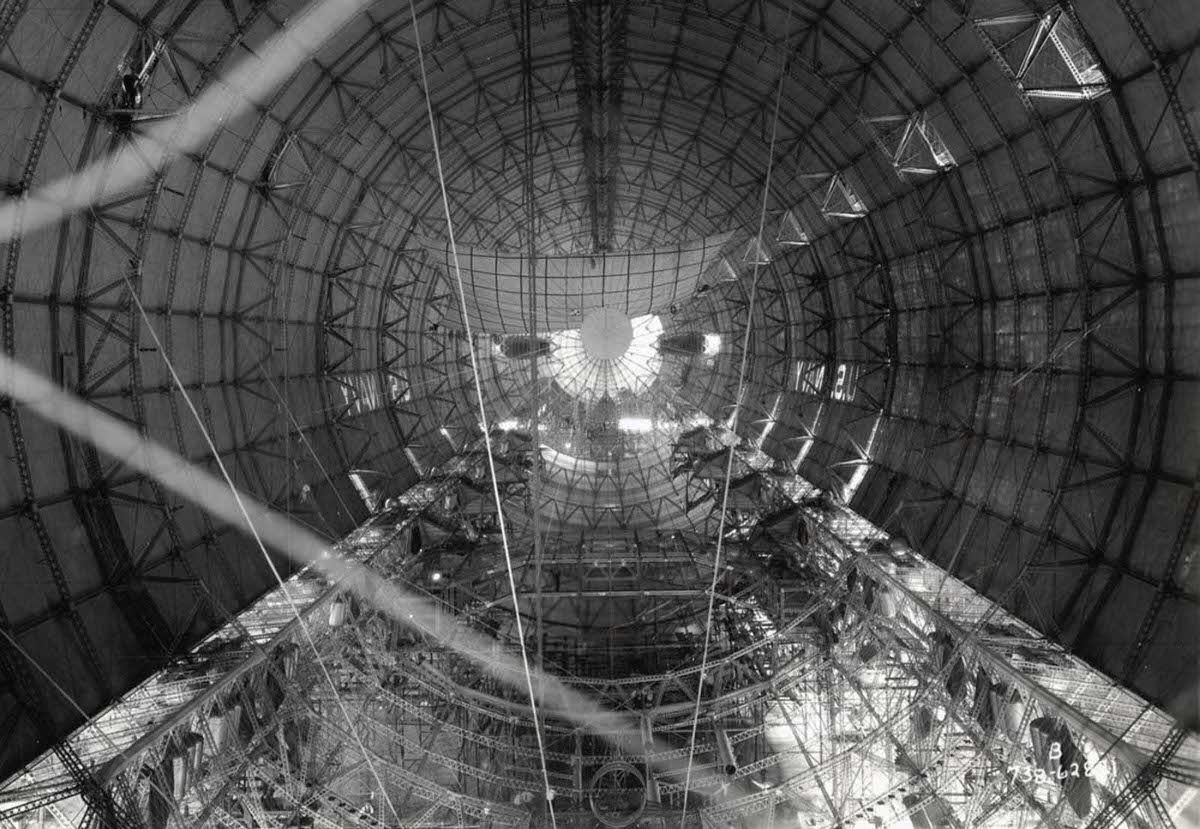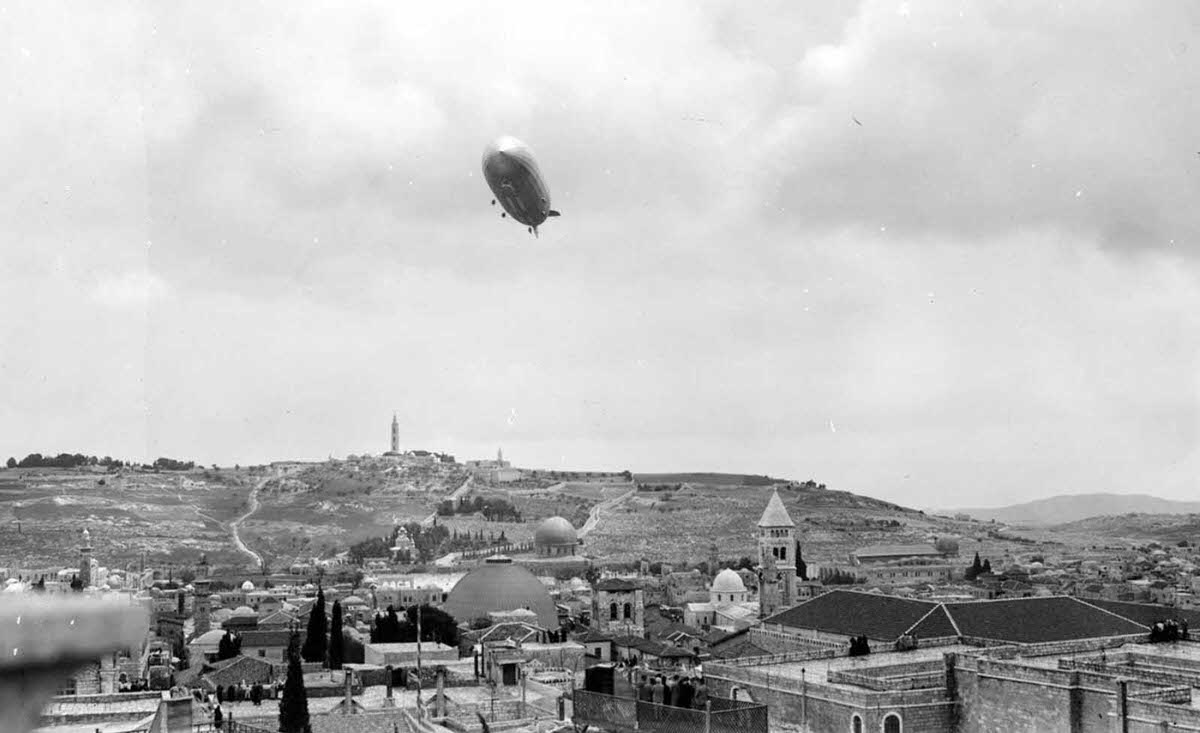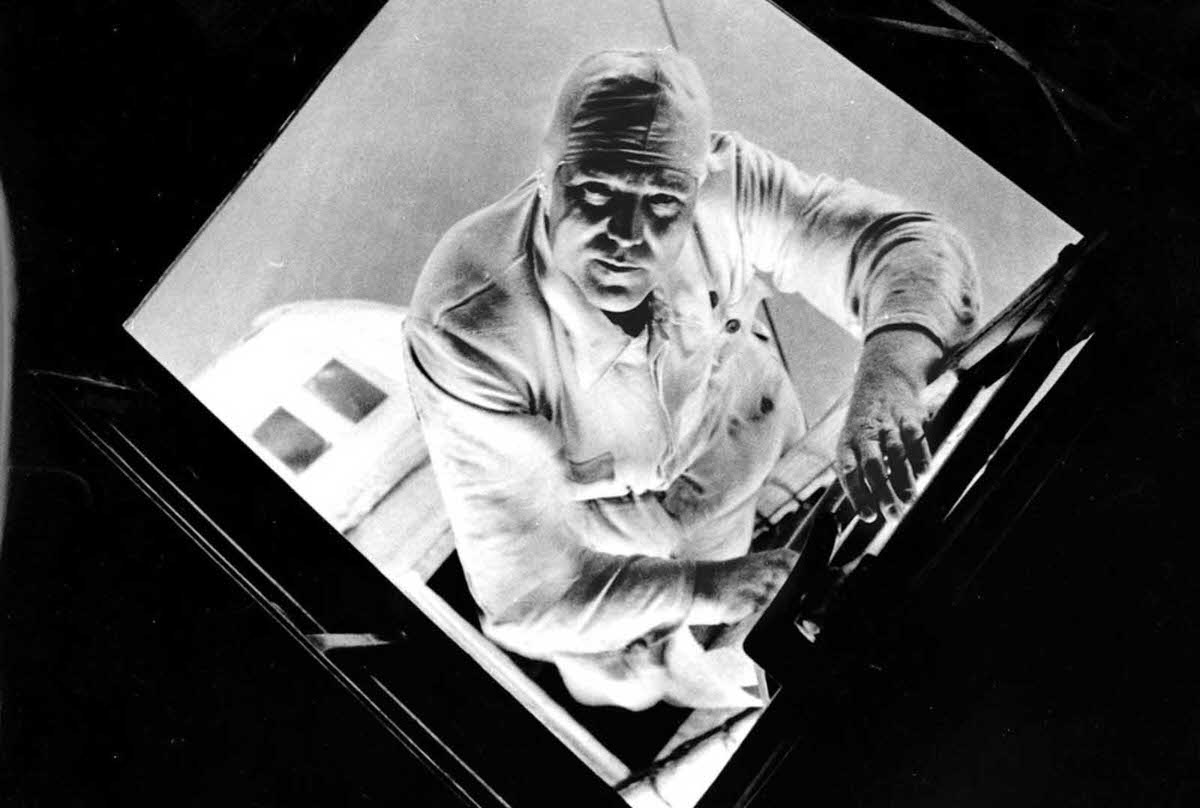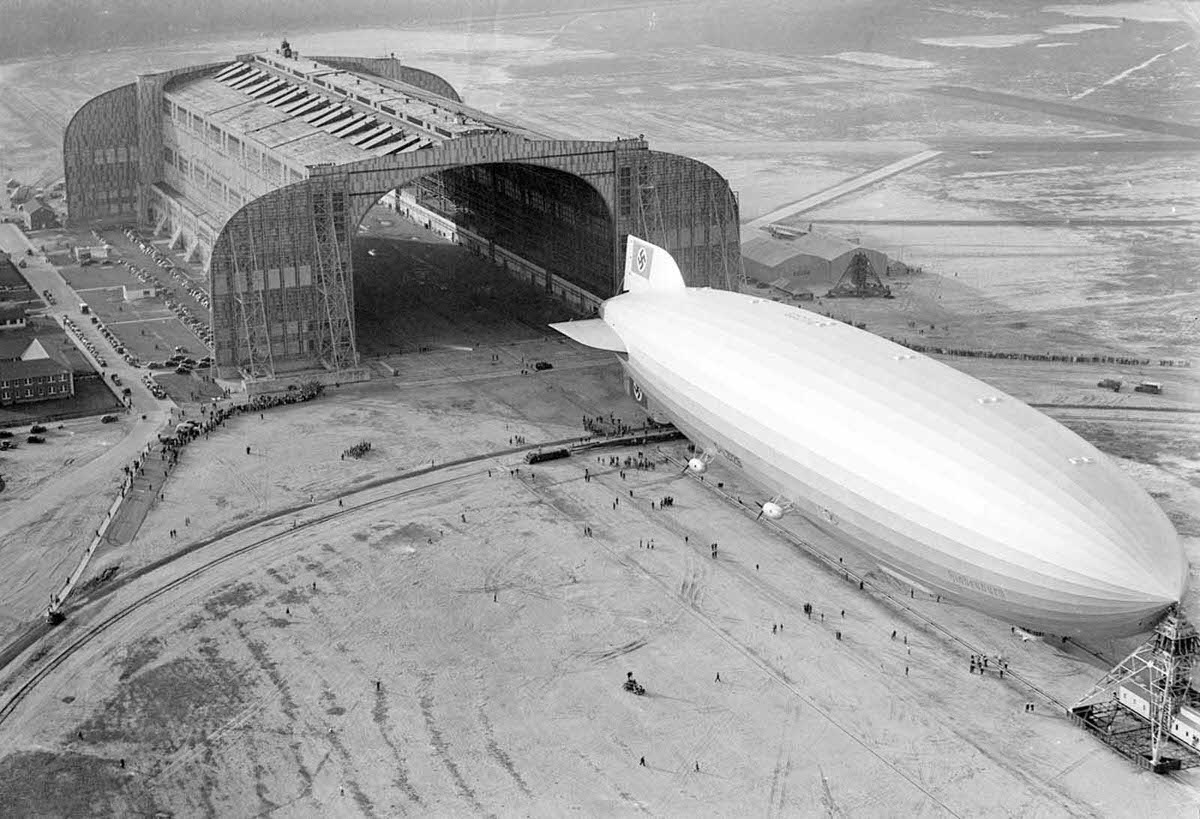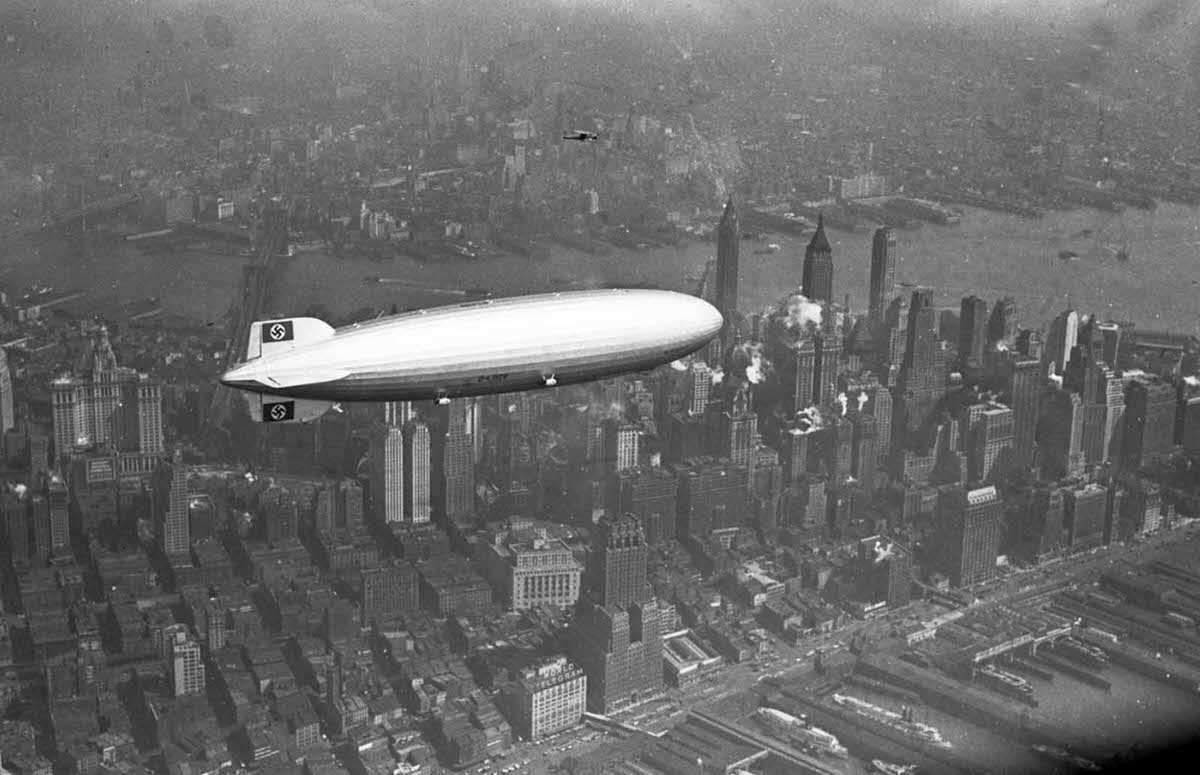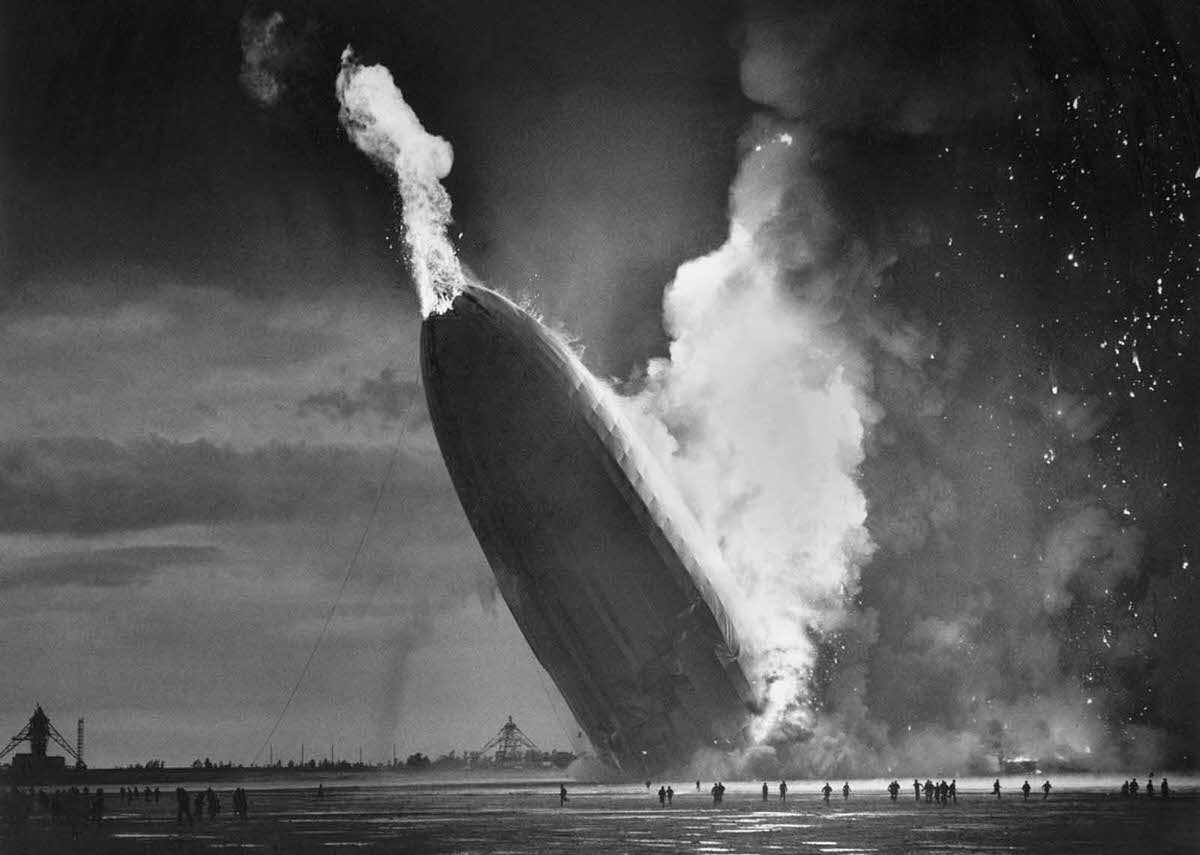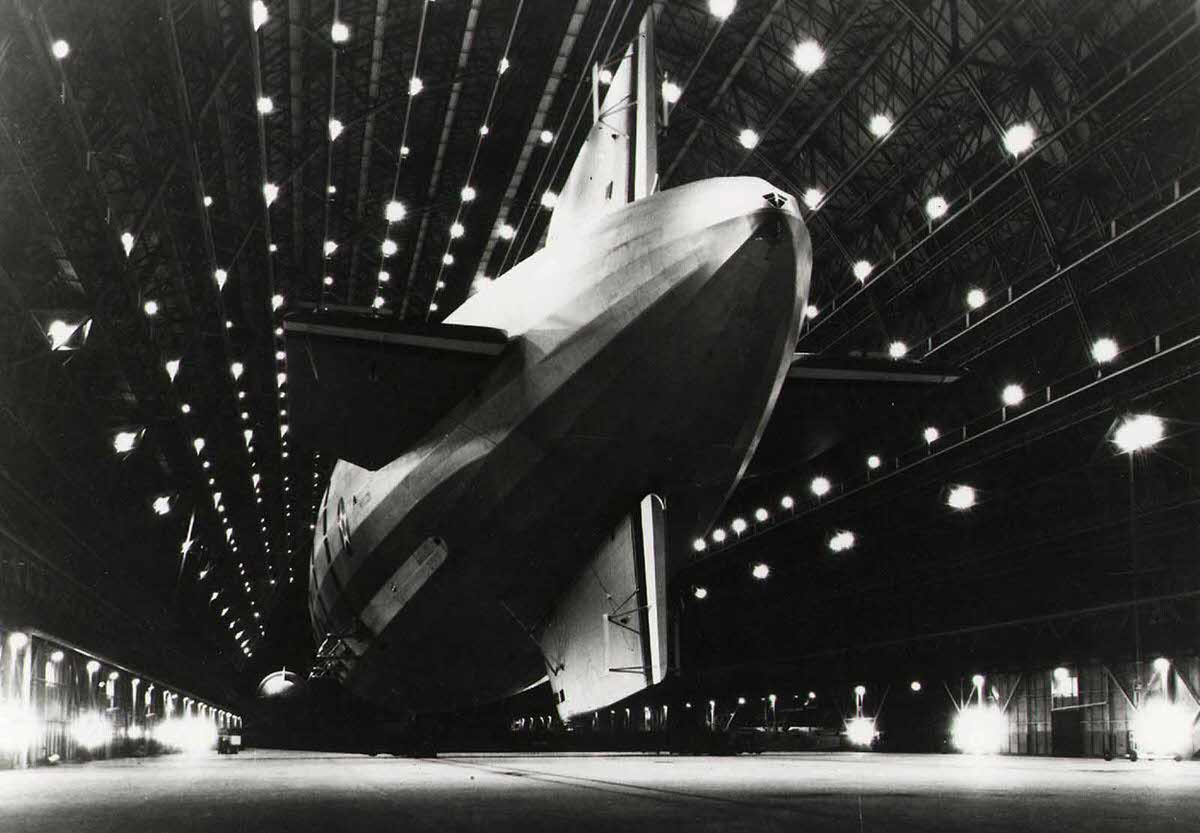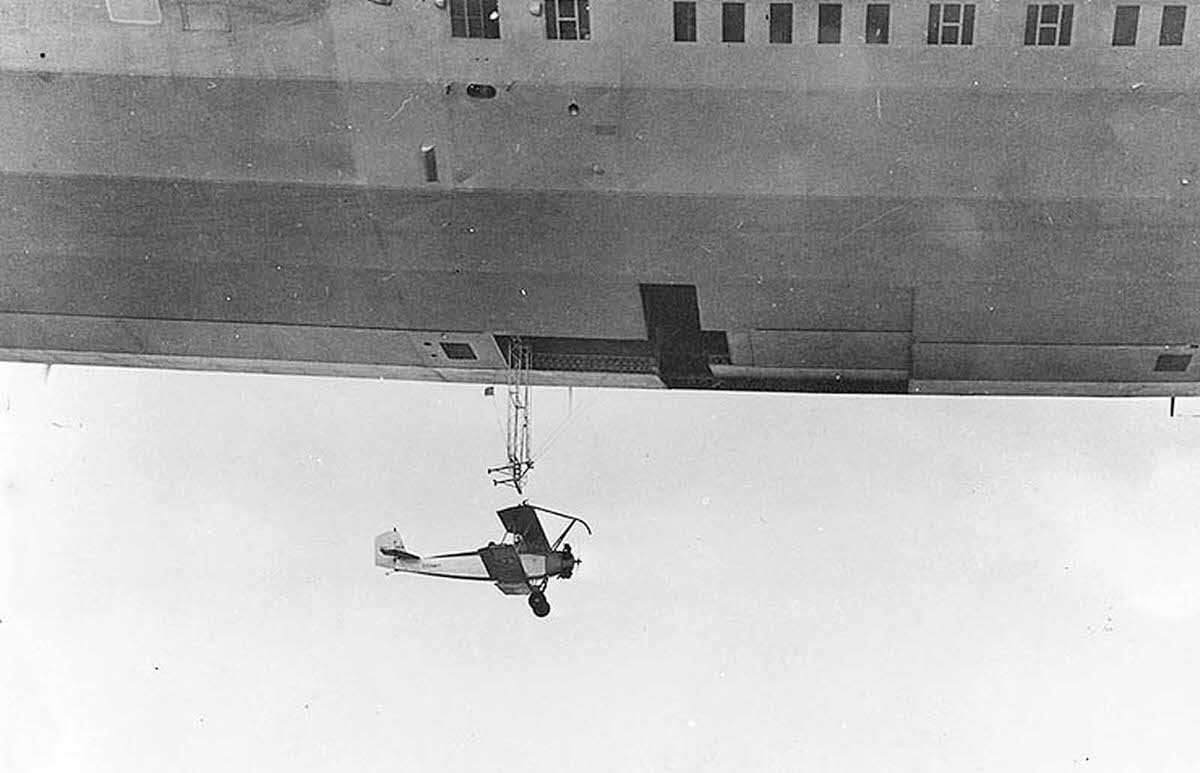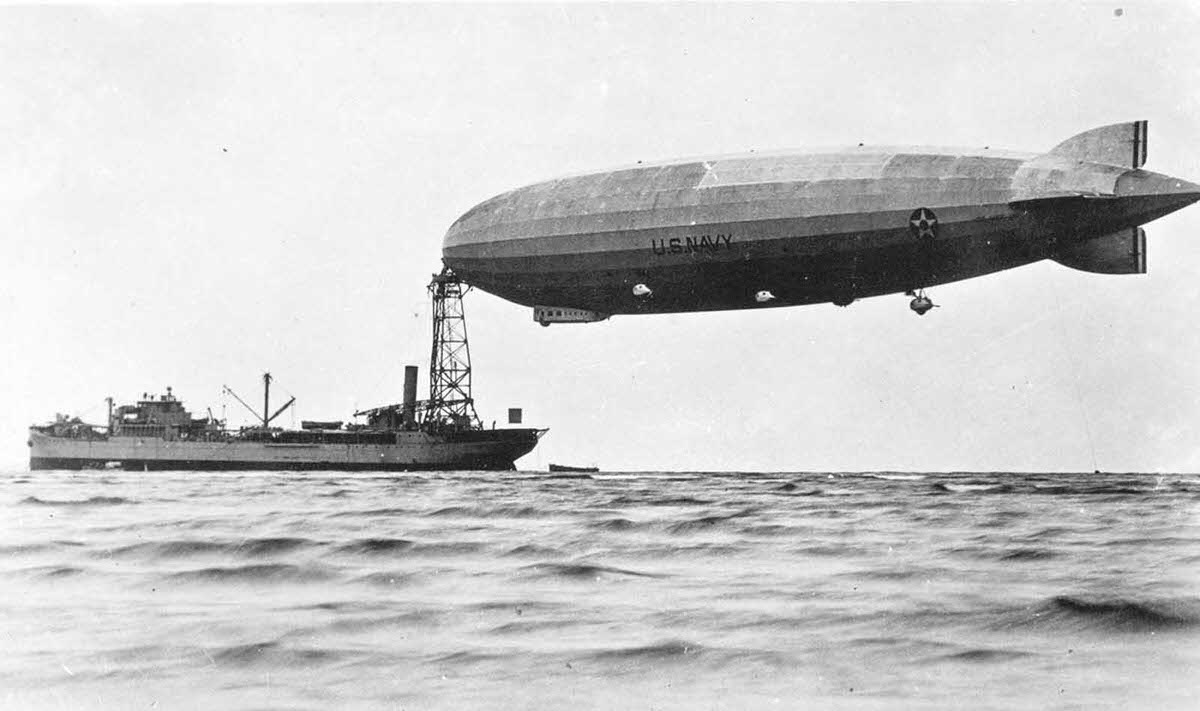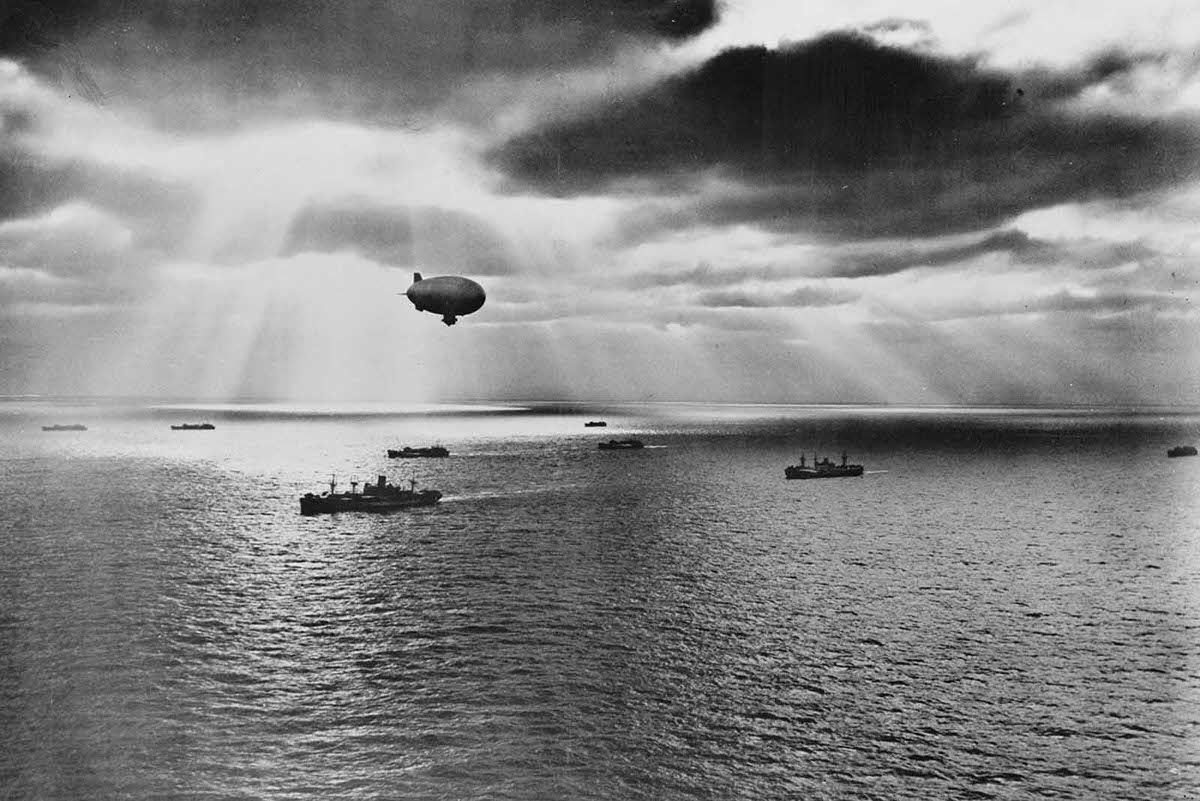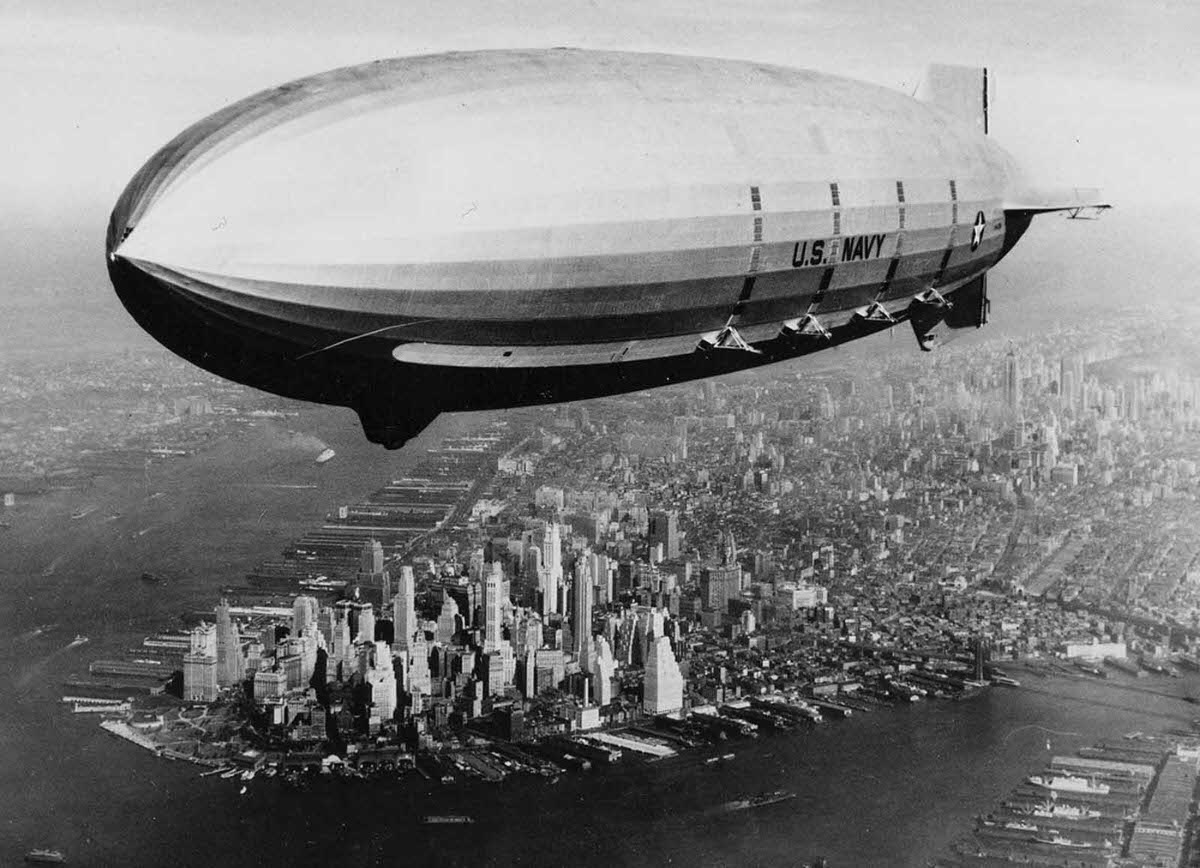As with hot air balloons, the history of airships begins in France. A French officer named Meusnier devised an airship based on hot air balloon technology and the ability to navigate. It was created in 1783 following the appearance of the hot air balloon. He designed an airship with an elongated envelope, propellers, and a rudder in 1784, unlike today’s blimp. However, Meusnier never constructed the airship he drew for his idea.
Another Frenchman, an engineer named Henri Giffard, built the first practical airship in 1852. It was driven by a three-horsepower steam engine weighing 350 lb (160 kg) and flew at 6 miles per hour (9 km/h). Giffard’s airship managed to lift off, but it could not be fully controlled. La France, the first successfully navigated airship, was built in 1884 by two more Frenchmen, Renard and Krebs. Its pilots completely controlled la France, thanks to its electrically-driven airscrew with a nine hp capacity. It flew at a speed of 15 mph (24 km/h).
Germany’s David Schwarz built the first distinctly rigid airship in 1895. As a result of his design, Count Zeppelin built the zeppelin, the first rigid airship. The zeppelin was powered by two 15 horsepower engines and flew at 25 mph (42 km/h). During World War I, Germany gained a significant military advantage due to the creation of more than 20 such vessels. Germany’s success inspired the British Royal Navy to use zeppelins as military reconnaissance aircraft to develop its aircraft. Instead of replicating the German rigid airship design, the British built several small non-rigid balloons. During World War II, these airships were used to detect German submarines and were known as “British Class B” airships. This may be the origin of the term blimp — “Class B” plus limp or non-rigid.
The United States, Britain, and Germany focused on developing large, rigid airships carrying passengers in the 1920s and 1930s. In contrast to Britain and Germany, the United States used helium primarily for their airships. The US has small helium reserves within its natural gas deposits, which are quite costly to produce but not flammable like hydrogen. The United States banned the export of helium to other countries because of its high price, forcing Germany and Britain to use the more volatile hydrogen gas. The heyday of the large passenger-carrying airship came to an abrupt end after hydrogen instead of helium was used in many ships, resulting in major losses of life.
#1 The U.S. Navy’s dirigible Los Angeles, upended after a turbulent wind from the Atlantic flipped the 700-foot airship on its nose at Lakehurst, New Jersey, in 1926.
#2 The German zeppelin Hindenburg floats past the Empire State Building over Manhattan, on August 8, 1936.
#3 In 1905, pioneering balloonist Thomas Scott Baldwin’s latest airship returns from a flight over the City of Portland, Oregon, during the Lewis and Clark Centennial Exposition.
#4 An airship flies above the White House in Washington, District of Columbia, in 1906.
#5 The Baldwin airship at Hammondsport, New York, in 1907. Thomas Scott Baldwin, second from left, was a U.S.
#6 French military dirigible “Republique” leaving Moisson for Chalais-Mendon, in 1907.
#7 Zeppelin airship seen from the water, August 4, 1908.
#8 A Clement-Bayard dirigible in shed, France, 1908.
#9 Wellman airship “America” viewed from the RMS TRENT, shown dragging her anchor, ca 1910.
#10 Boats, airplane, and airship, ca. 1922. Possibly the U.S. Navy’s SCDA O-1.
#11 Luftskipet (airship) “Norge” over Ekeberg, Norway, on April 14, 1926.
#12 The giant German dirigible Graf Zeppelin, at Lakehurst, New Jersey, on August 29, 1929.
#13 The Graf Zeppelin flies low over Tokyo before proceeding to Kasumigaura Airport on its around-the-world flight, on August 19, 1929.
#14 A pair of Gloster Grebe fighter planes, tethered to the underside of the British Royal Navy airship R33, in October of 1926.
#15 British M.P.s walk onto an airship gangplank, in Cardington, England, in the 1920s.
#16 Aerial view of the USS Akron over Washington, District of Columbia, in 1931.
#17 Passengers in the dining room of the Hindenburg, in April of 1936.
#18 Interior hull of a U.S. Navy dirigible before gas cells were installed, ca. 1933.
#19 The Graf Zeppelin over the old city of Jerusalem, April 26, 1931.
#20 The mechanic of the rear engine gondola changes shift climbing inside the mantle of the airship.
#21 The German-built zeppelin Hindenburg trundles into the U.S. Navy hangar, its nose hooked to the mobile mooring tower, at Lakehurst, New Jersey, on May 9, 1936.
#22 The Hindenburg flies over Manhattan, on May 6, 1937.
#23 The German dirigible Hindenburg crashes to earth, tail first, in flaming ruins after exploding at the U.S. Naval Station in Lakehurst, New Jersey, on May 6, 1937.
#24 The airship USS Macon, moored at Hangar One at Moffett Federal Airfield near Mountain View, California.
#25 The USS Akron launches a Consolidated N2Y-1 training plane during flight tests near Naval Air Station at Lakehurst, New Jersey, on May 4, 1932.
#26 The USS Los Angeles, moored to the USS Patoka.
#27 The wreckage of the naval dirigible USS Akron is brought to the surface of the ocean off the coast of New Jersey, on April 23, 1933.
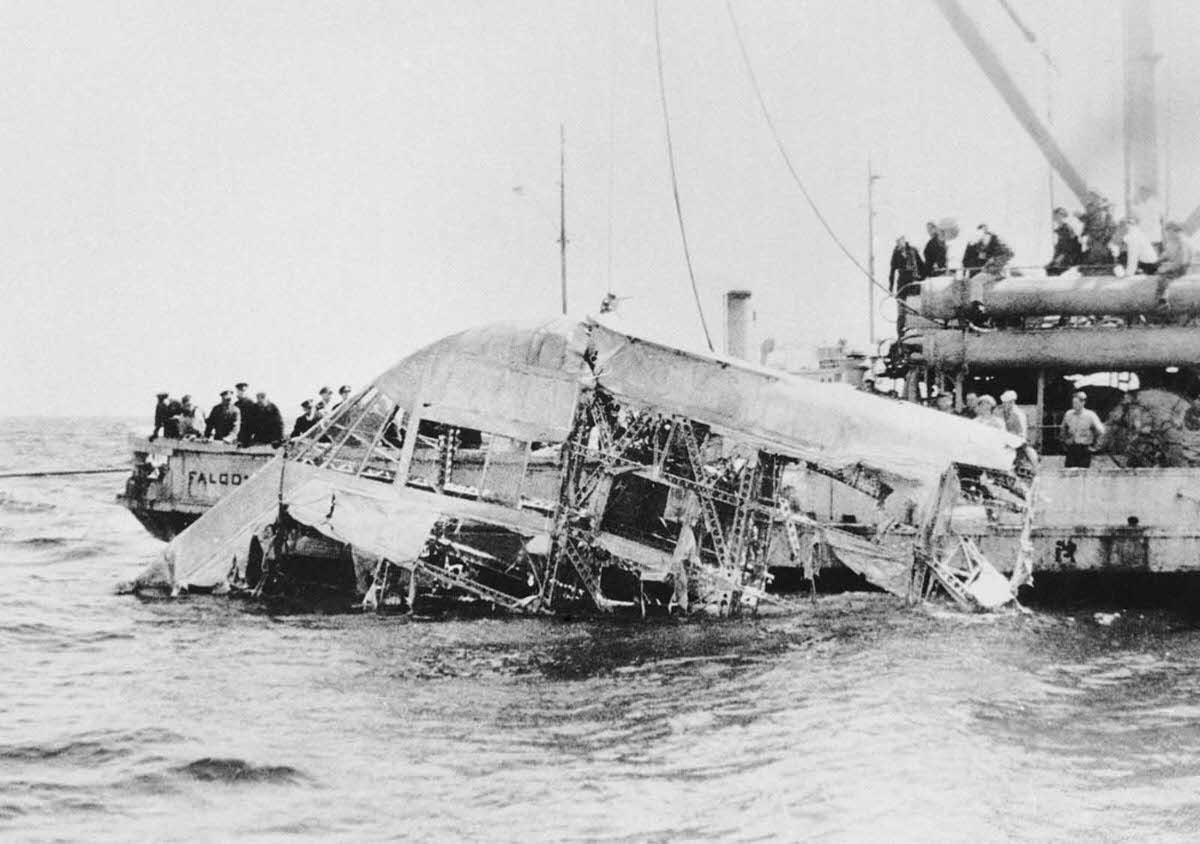
The Akron went down in a violent storm off the New Jersey coast. The disaster claimed 73 lives, more than twice as many as the crash of the Hindenburg. The USS Akron, a 785-foot dirigible, was in its third year of flight when a violent storm sent it crashing tail-first into the Atlantic Ocean shortly after midnight on April 4, 1933.
#28 Sunset over the Atlantic finds a United States convoy moving peacefully towards it destination during World War II.
#29 The USS Macon sails over lower Manhattan, on October 9, 1933.
#30 At a Nevada nuclear test site test Site, on August 7, 1957, the tail of a U.S. Navy Blimp is photographed with the cloud of a nuclear blast in the background.
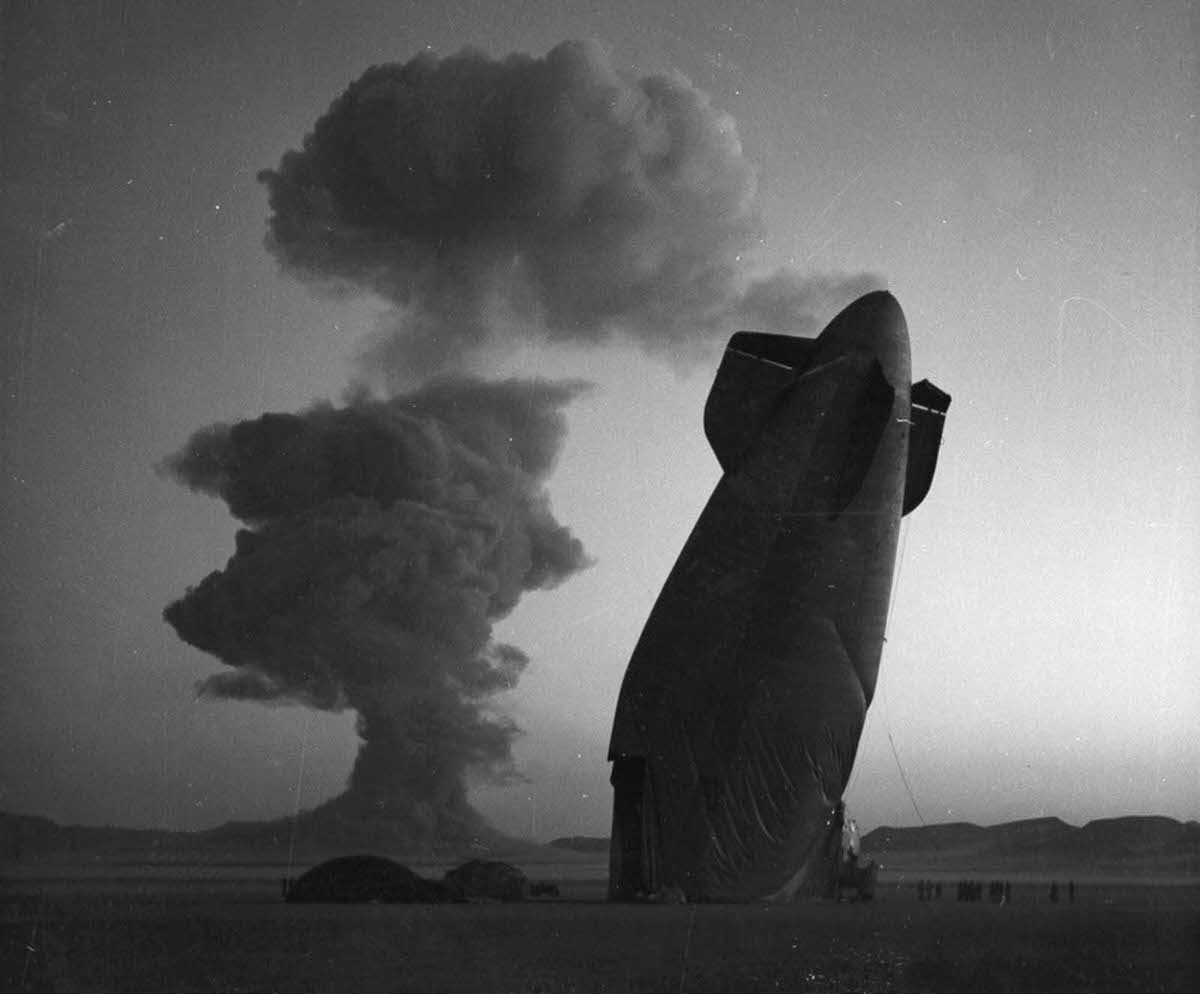
The Blimp was in temporary free flight in excess of five miles from ground zero when it collapsed from the shock wave of the blast. The airship was unmanned and was used in military effects experiments. Navy personnel on the ground in the vicinity of the experimental area were unhurt.


